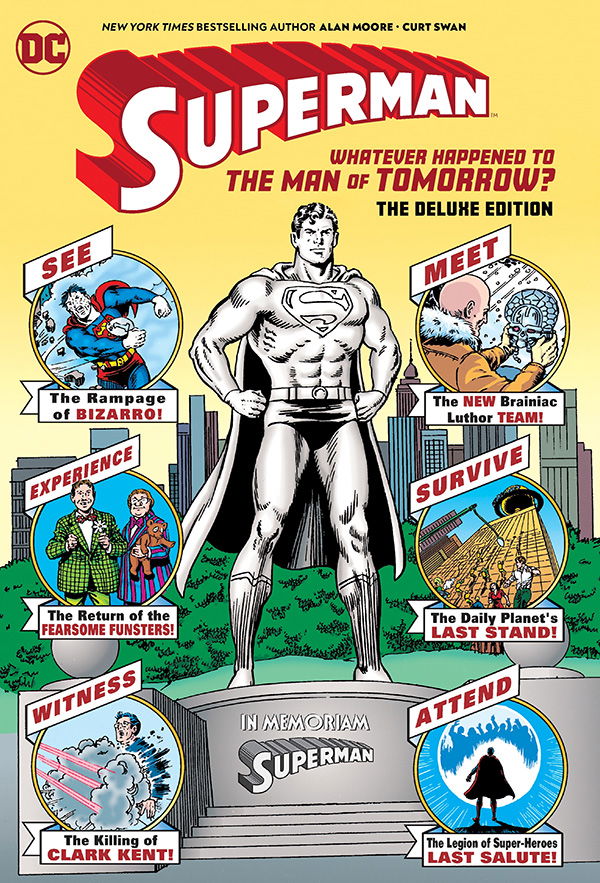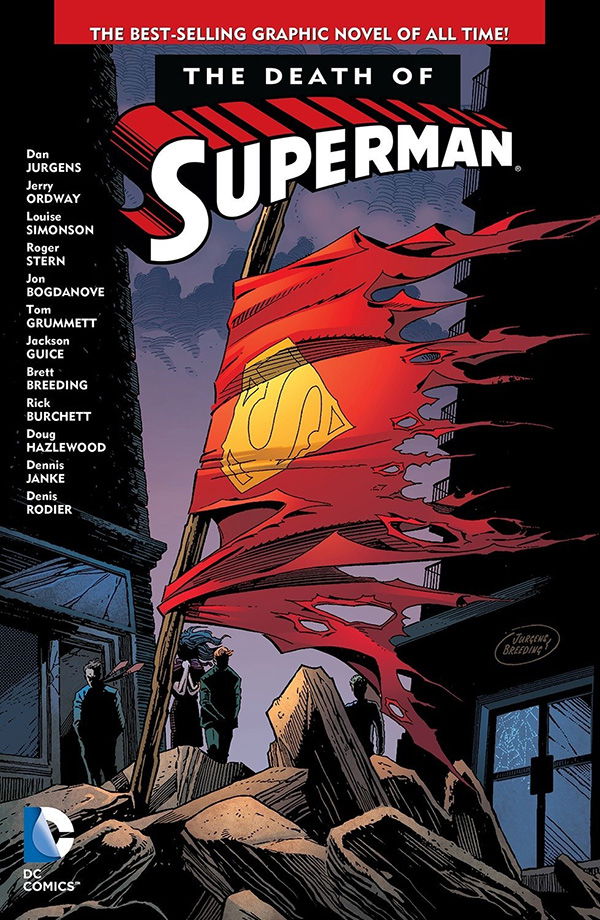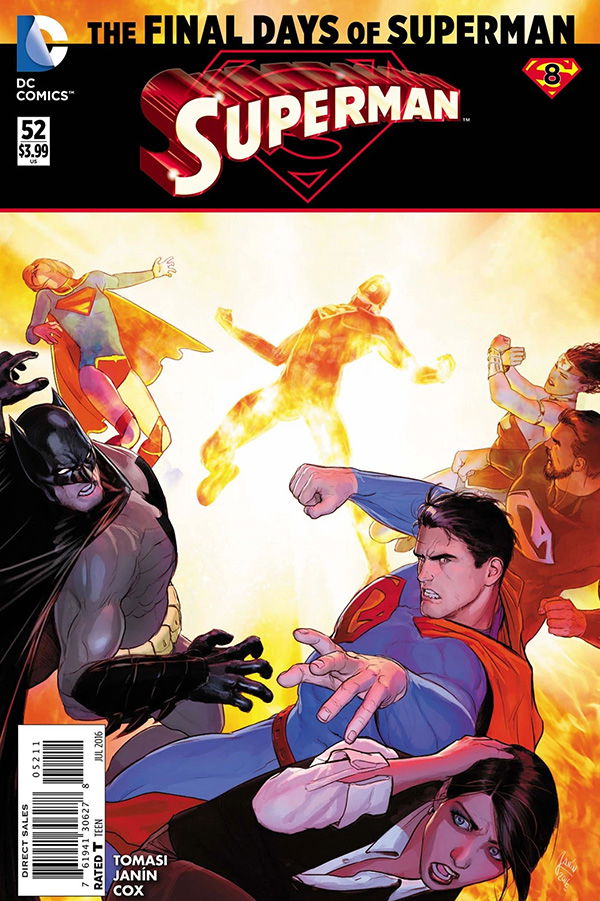
It’s no secret that Superman is nearly indestructible, except when he’s in the presence of Kryptonite. But, like all other comic book characters, he is not immune to death. On the contrary, killing off Superman is a popular notion that has been explored several times over the years.
Readers are naturally intrigued by the stories dealing with Superman’s death. Because he is one of the most popular and powerful superheroes, his death has a significant emotional impact as well as a mythical meaning. Those storylines may also have high stakes and epic conflicts in order to create a spectacle based on what Superman means to the readers, his allies, and his foes.
Whatever attracts the readers towards Superman’s death, it is a subject that has been explored throughout the years, from forgettable tales to iconic stories.
Warning! As this article discussed how Superman died in several stories, it is full of spoilers. Tread carefully.

The Silver Age of Comics and Superman’s Imaginary Deaths
It didn’t take long for Superman to “die” in the pages of comic books, and more often than not, he wasn’t dead but was thought to be dead for various reasons. The first story of this type was published in 1943 in Superman #21, less than five years after his introduction, with Superman’s death on the front-page news of the Daily Planet. Naturally, the Man of Steel was not dead; he had only stopped his heart from pumping to more successfully track down a criminal.
The first “Death of Superman” story was released much later, in 1961. Superman #149, by Jerry Siegel and Curt Swan, was once deemed an “Imaginary Story” before being retconned as taking place in an alternate reality, Earth-149.
This story, which goes by the simple title “The Death of Superman,” introduces us to a Lex Luthor who is now serving time and who hopes to find a cancer treatment. Because he wants to think his nemesis can change, Superman assists and defends Luthor against other criminals and provides him with security so he may do his studies. In fact, Luthor mislead him into a trap and used Kryptonite to kill him. After Superman’s funeral, Supergirl took Luthor to Kander for a trial where he was sentenced to the Phantom Zone. Following this tragedy, Supergirl takes on his cousin’s position as protector of the public with Krypto by her side.
Superman has come close to death in the following decades, thanks to fake deaths, hoaxes, parallel universes, and imaginary stories. Throughout that period, he was killed by Kryptonite radio waves before being revived, transformed into a solid rock, fall under a red sun, came into contact with deadly kryptonite, and came under some lethal blows by Lex Luthor, among other things.

A possible end for Superman in a pre-Crisis World
One of the most renowned Superman stories also deals with Superman’s probable demise. We’re talking about Alan Moore and Curt Swan’s 1986 story Whatever Happened to the Man of Tomorrow? This is another “imaginary tale” that was intended to be the final Superman Silver Age story. Following Crisis on Infinite Earths, the DC Comics universe was entirely reset, introducing us to a new Superman, with a fresh origin story and a back-to-basics approach to make it accessible to new readers.
To give Silver Age Superman the end that he deserves, Alan Moore, Curt Swan, and editor Julius Schwartz imagined the ultimate pre-Crisis showdown for the Man of Steel. Lois Lane is interviewed by Daily Planet writer Tim Crane on the anniversary of Superman’s death, ten years after his last public appearance. She describes the end of his career, which included many violent attacks by his opponents, the disclosure of his secret identity as Clark Kent, and the deaths of several people close to him. In the end, following a violent act on his part, Superman chose to expose himself to Gold Kryptonite — which permanently strips him of his powers — and disappears into the Arctic. His body has never been found and it is speculated that he has died of exposure…
But once the journalist concluded his interview, we are left in the company of Lois’s family, now married to a certain Jordan Elliot and the mother of Jonathan. It is then revealed that her husband prefers to have an ordinary life. As Jonathan plays with a piece of coal that he coals into a diamond, Jordan winks to the readers, and we let the family live happily ever after.

The Real Death of Superman
The most famous Superman demise ever shown in a comic book took place in the 1990s and was initially not truly intended. Initially, a wedding was planned between Superman and Lois Lane. At the same time, this future union was being discussed by the producers of the ABC television series Lois & Clark: The New Adventures of Superman. Warner Bros. wanted to maintain a unified brand across all media even though the comics and the show were two separate continuity. DC Comics decided to postpone the wedding until a later time as a result. Comic book writer Jerry Ordway jokingly proposed, as he always did, to kill Superman when forced to think with a fresh plot. But this time, the idea took off!
Published in 1993 and divided into three story arcs, The Death of Superman begins with Superman’s battle with the monster Doomsday and ends with his demise. In the second act, we witness Superman’s fellow superheroes and the rest of the DC Universe in mourning. In the third, four fake Supermans appear before the real one is brought back to life. On the front line of this event was Lois Lane, serving as the link between all the titles.
Obviously, DC never intended to get rid of Superman permanently, but the story took off massively as killing an icon like Superman was shocking at the time, and the death of a superhero was not a commodity yet. People really believed it, and Superman’s death even make national news!
The industry was transformed by this event, with DC plunging into similar stories for their other heroes: Batman broke his back before Superman came back to life; Wonder Woman was replaced by Artemis; Connor Hawke became the Green Arrow following this father’s death; and the Green Lantern Hal Jordan was transformed into the villain Parallax and replaced by Kyle Rayner. And it was only at DC!
The whole event introduced and created a new whole generation of loyal readers while also encouraging the media and Hollywood to take comic books more seriously.

A New 52 Superman Death
The DC Universe was revamped in 2011, ushering in a new period known as the New 52. In this reboot, a new Superman was introduced, one who was younger and rasher, and who was no longer in love with Lois Lane. This version of the character, who also had a romance with Wonder Woman and had multiple adventures, had been through a lot and his powers were malfunctioning. All of this was building up to his final story arc, The Final Days of Superman, written by Peter J. Tomasi and Miker Janin.
As Clark realized that he is dying from Kryptonite poisoning, a man called Denny Swan is being hit by a bolt of energy. He has Superman-like abilities but suffers from delusion and declares himself Superman. The original Superman felt compelled to use his solar flare to defeat the deluded man.
Following this confrontation, Clark’s only choice is to say goodbye to all of his close friends. His life cannot be spared, but he can express his gratitude to his friends as he lives his final minutes before turning to dust, with only his cape remaining.
Though New 52 Superman was an unpopular version of the character, Final Days give him a proper send-off.
![]()
Though killing a superhero has become too ordinary (and more annoying), the multiple deaths of the Man of Steel have left a lasting impact on the comic book landscape. These stories highlight Superman’s humanity, vulnerability, and the enduring themes of heroism and sacrifice. Despite his mortality, Superman’s legacy as a symbol of hope and resilience remains unwavering.
The deaths of Superman in various comic book arcs have pushed the boundaries of the superhero genre and showcased the depth of his character. Each instance serves as a reminder of the enduring power of heroism in the face of adversity, emphasizing Superman’s significance as a symbol of hope and inspiration for generations of readers.